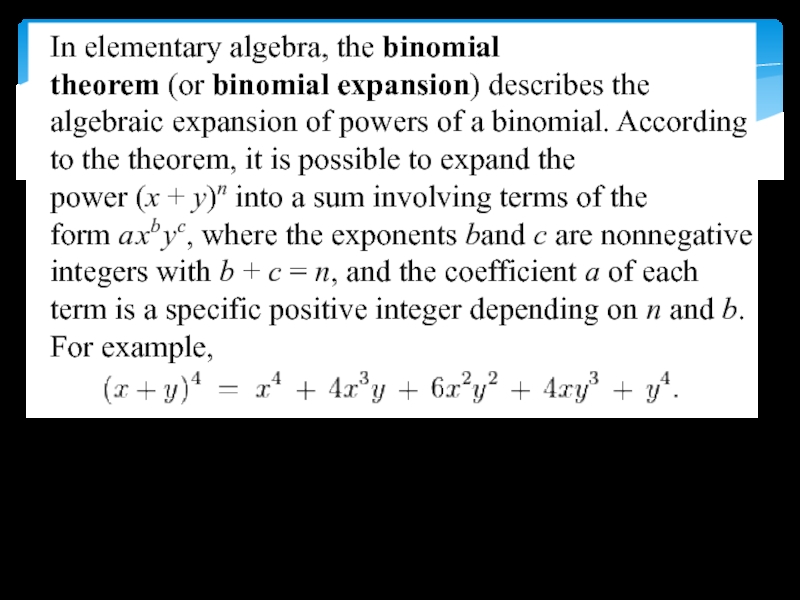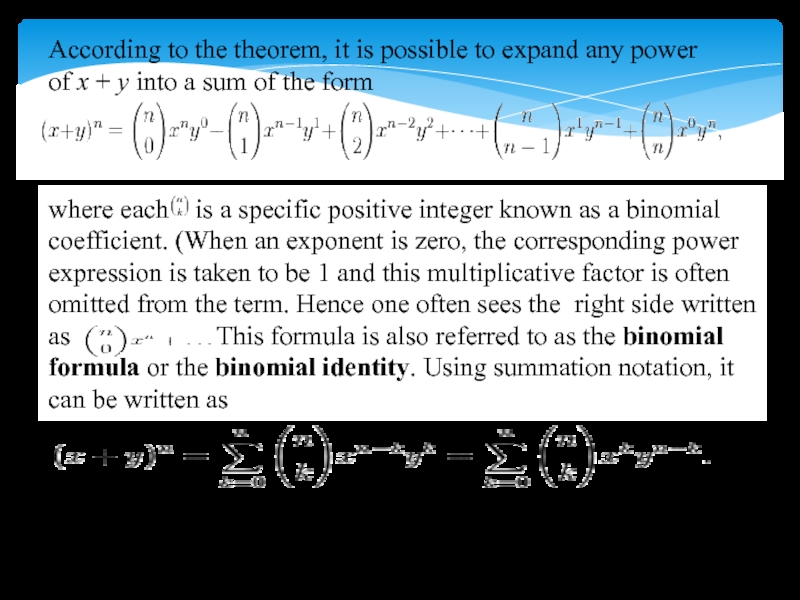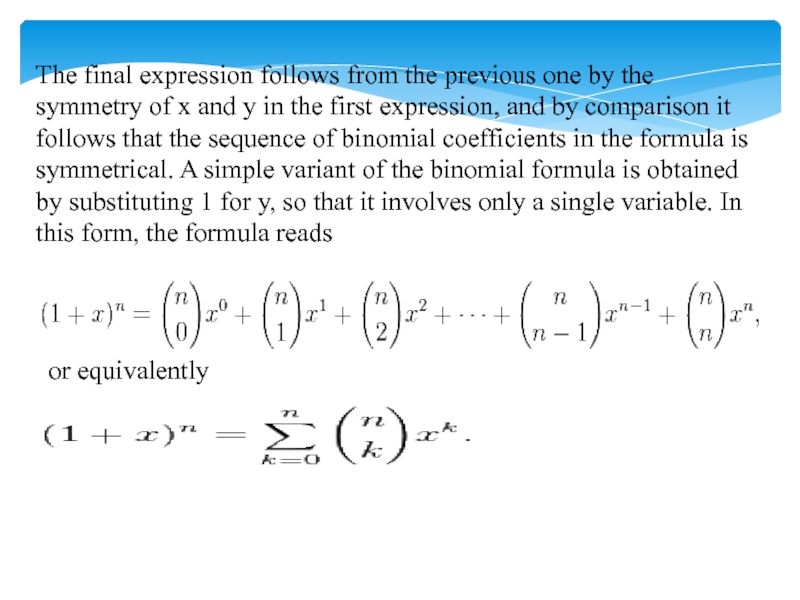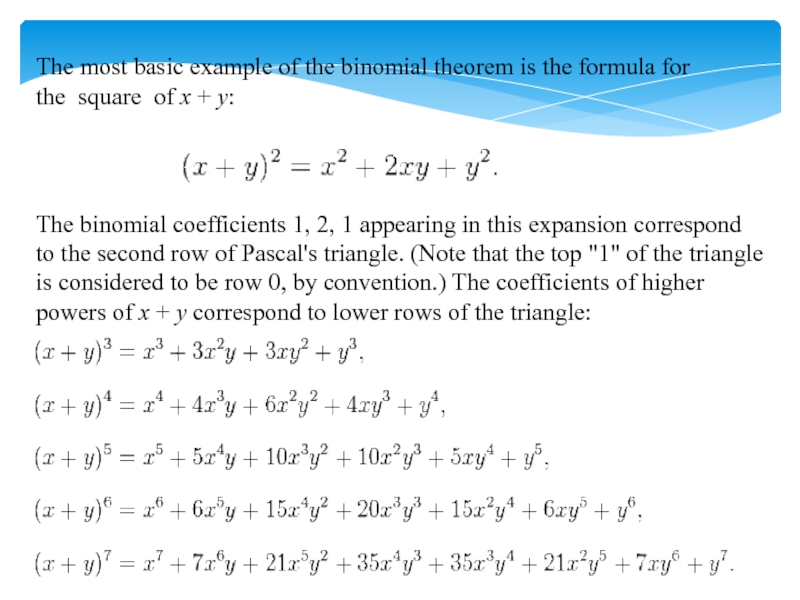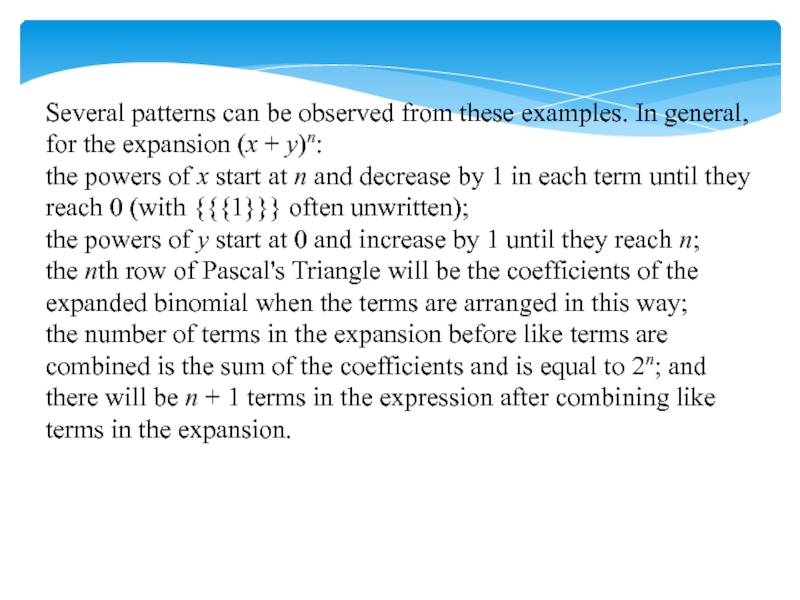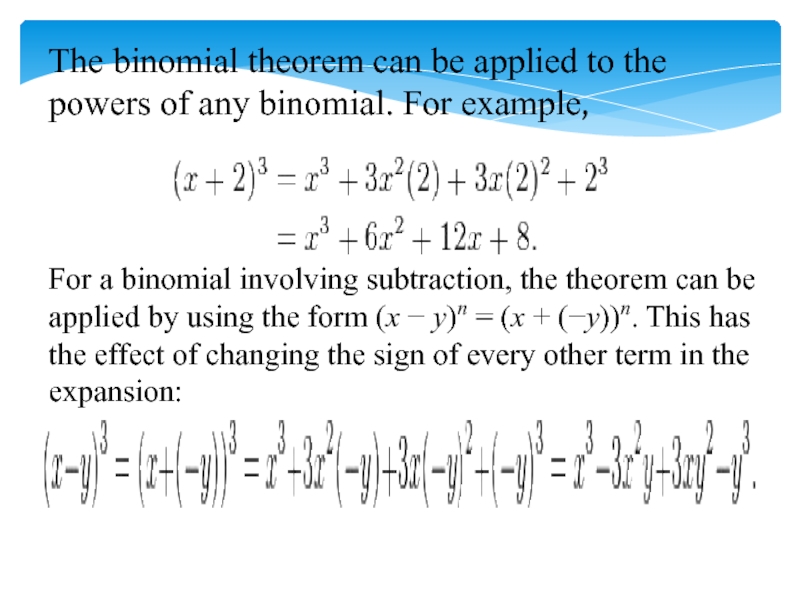Разделы презентаций
- Разное
- Английский язык
- Астрономия
- Алгебра
- Биология
- География
- Геометрия
- Детские презентации
- Информатика
- История
- Литература
- Математика
- Медицина
- Менеджмент
- Музыка
- МХК
- Немецкий язык
- ОБЖ
- Обществознание
- Окружающий мир
- Педагогика
- Русский язык
- Технология
- Физика
- Философия
- Химия
- Шаблоны, картинки для презентаций
- Экология
- Экономика
- Юриспруденция
Newton binomial formula
Содержание
- 1. Newton binomial formula
- 2. In elementary algebra, the binomial theorem (or binomial expansion) describes the
- 3. The binomial theorem as such can be
- 4. According to the theorem, it is possible
- 5. The final expression follows from the previous
- 6. The most basic example of the binomial
- 7. Several patterns can be observed from these
- 8. The binomial theorem can be applied to
- 9. Thank you for attention!
- 10. Скачать презентанцию
In elementary algebra, the binomial theorem (or binomial expansion) describes the algebraic expansion of powers of a binomial. According to the theorem, it is possible to expand the power (x + y)n into a sum involving terms of the form a xb yc, where the exponents band c are nonnegative integers with b + c = n,
Слайды и текст этой презентации
Слайд 2In elementary algebra, the binomial theorem (or binomial expansion) describes the algebraic expansion of powers of
Слайд 3The binomial theorem as such can be found in the
work of 11th-century Persian mathematician Al-Karaji who described the triangular pattern of
the binomial coefficients. He also provided a mathematical proof of both the binomial theorem and Pascal's triangle, using a primitive form of mathematical induction. The Persian poet and mathematician Omar Khayyam was probably familiar with the formula to higher orders, although many of his mathematical works are lost..The binomial expansions of small degrees were known in the 13th century mathematical works of Yang Hui and also Chu Shih-Chieh. Yang Hui attributes the method to a much earlier 11th century text of Jia Xian, although those writings are now also lost.Слайд 4According to the theorem, it is possible to expand any
power of x + y into a sum of the form
where each is a
specific positive integer known as a binomial coefficient. (When an exponent is zero, the corresponding power expression is taken to be 1 and this multiplicative factor is often omitted from the term. Hence one often sees the right side written as This formula is also referred to as the binomial formula or the binomial identity. Using summation notation, it can be written as Слайд 5The final expression follows from the previous one by the
symmetry of x and y in the first expression, and
by comparison it follows that the sequence of binomial coefficients in the formula is symmetrical. A simple variant of the binomial formula is obtained by substituting 1 for y, so that it involves only a single variable. In this form, the formula readsor equivalently
Слайд 6The most basic example of the binomial theorem is the
formula for the square of x + y:
The binomial coefficients 1, 2, 1
appearing in this expansion correspond to the second row of Pascal's triangle. (Note that the top "1" of the triangle is considered to be row 0, by convention.) The coefficients of higher powers of x + y correspond to lower rows of the triangle:Слайд 7Several patterns can be observed from these examples. In general,
for the expansion (x + y)n:
the powers of x start at n and decrease by 1 in
each term until they reach 0 (with {{{1}}} often unwritten);the powers of y start at 0 and increase by 1 until they reach n;
the nth row of Pascal's Triangle will be the coefficients of the expanded binomial when the terms are arranged in this way;
the number of terms in the expansion before like terms are combined is the sum of the coefficients and is equal to 2n; and
there will be n + 1 terms in the expression after combining like terms in the expansion.

